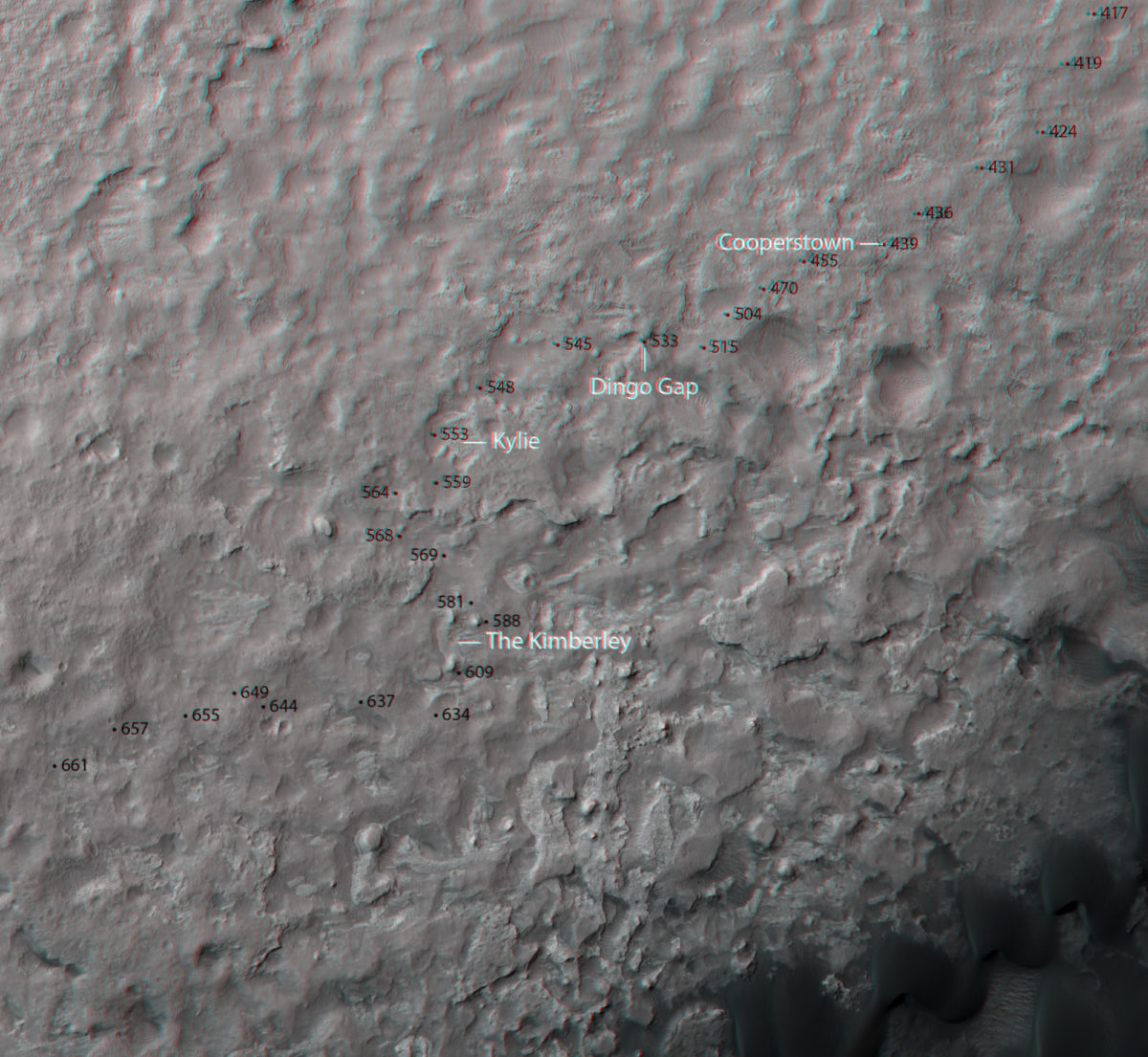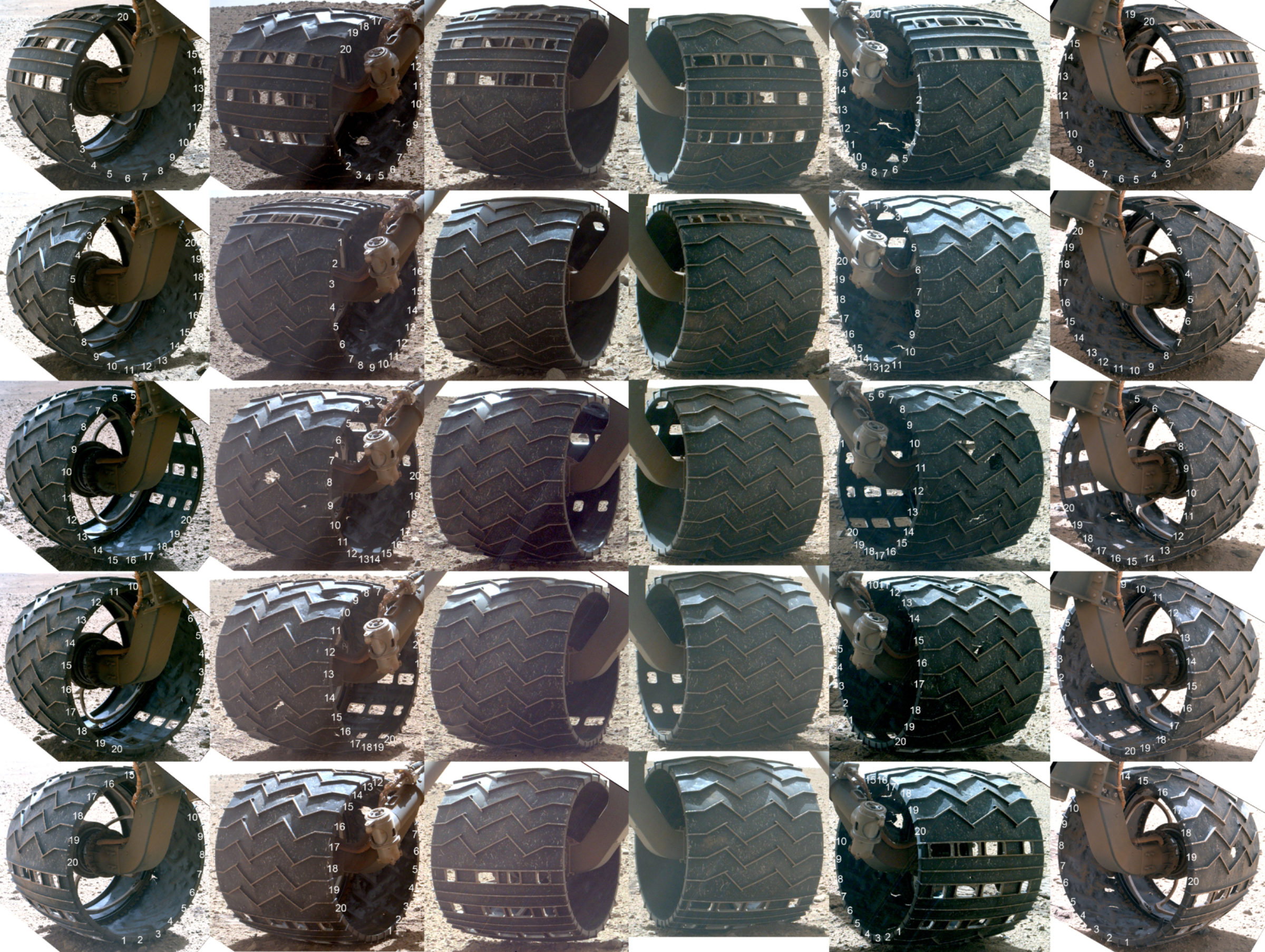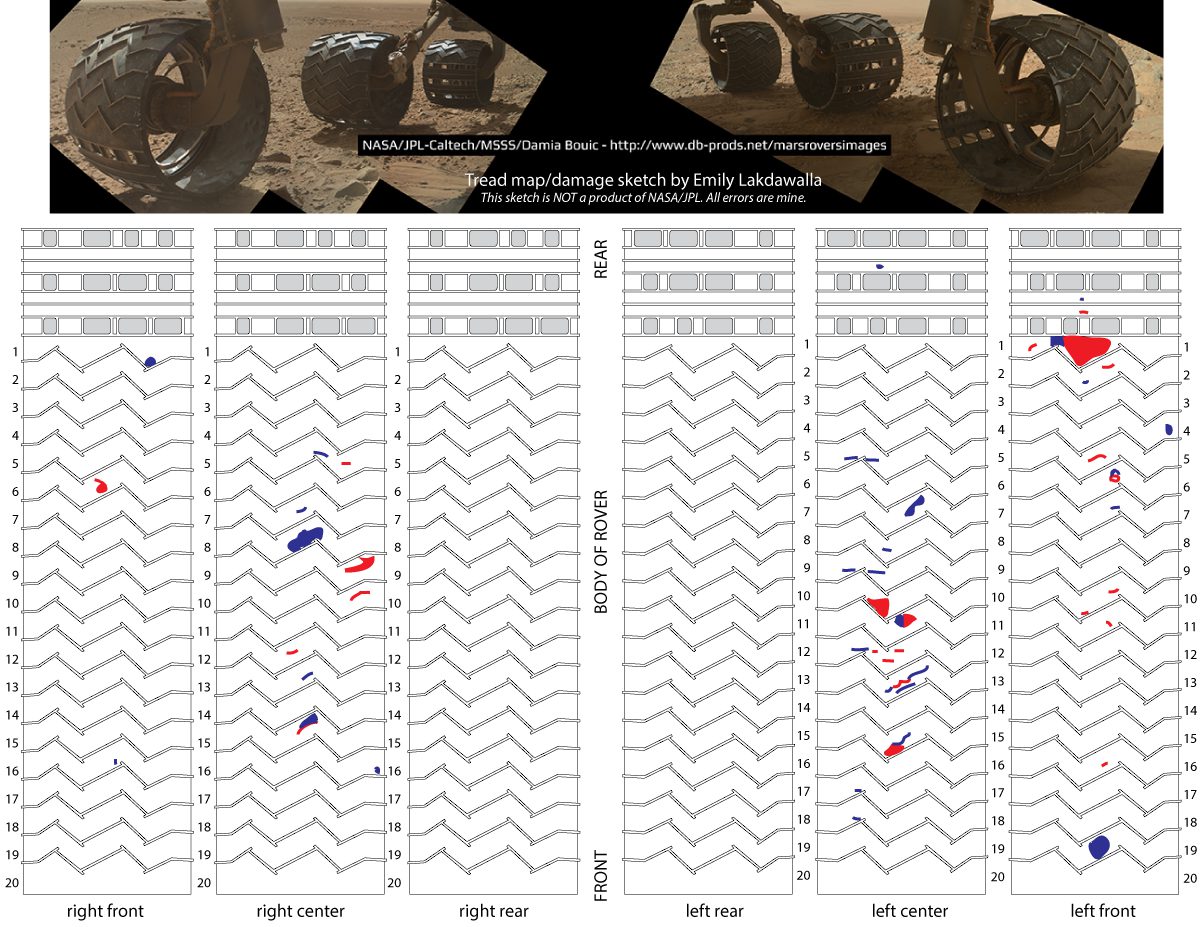Emily Lakdawalla • Jun 16, 2014
Curiosity update, sols 645-661: Driving, driving, driving
This is going to be a brief update without a lot of news, but Curiosity has been busy. The rover has traveled more than half a kilometer since my last update, making steady progress beyond the Kimberley toward Murray Buttes. The drives have been mixed, shorter days of only 30 or 40 meters interspersed with a few quite long ones, including the second and fourth longest drives of the mission (the four longest drives to date: 153 meters on sol 385; 139 on sol 661; 131 on sol 419; and 121 on sol 657). We'll likely continue to see a mix of short and long drives like this, because of Curiosity's new driving strategy that has her traveling down sand-filled swales between rockier highlands. Sometimes, like on sol 661, she can see a good long way down the valley, and the rover drivers can plan a very long drive. Other times, sight distances are limited; the drivers won't take Curiosity into terrain that they can't see. They are using Autonav, which helps them get beyond areas where they have good stereo data, but they still have to see the way ahead to plan drives. You can see in this 3D route map how they are maneuvering around higher hummocks. She's just about to drive off this map -- the next map section includes Murray Buttes!

Because of the focus on driving, there hasn't been a lot of time for science, but they have taken a couple of full 360-degree color panoramas, and a few other goodies. One of those goodies was the first-ever set of images of one planet transiting the Sun as seen from a planet other than Earth: Mercury transited the Sun as seen from Mars on June 4, 2014 at around 17:00 UTC. (Here's a view from the Solar System Simulator.) Curiosity was only barely able to detect Mercury against the solar disk -- two visible sunspots were much larger -- but it was still a pretty cool achievement.
Another really cool thing they did recently was to take a MARDI movie while the rover was driving, on sol 651. MARDI, you may recall, is the camera they used to get the downward-pointing view of the landing. MARDI is theoretically capable of video at a rate of 4 or 5 frames per second, and they used that to good effect during the landing, but you don't need to take video so fast for a rover that drives at a top speed of 4 centimeters per second! So it looks like they took photos maybe every 4 or 5 seconds during the active part of the drive. So far there are only a few frames downlinked at full resolution. The video is a little bit washed out, Mike Caplinger explained at unmannedspaceflight.com, because "The exposure time was set by autoexposure when the camera was looking into shadow, and then the drive put us in a much brighter illumination geometry. Next time we'll probably use a pre-calculated manual exposure." It still looks really cool. Below is an early attempt at putting together the animation, and here's a 6-image GIF made of heavily processed versions of the few full-resolution frames that are on Earth.
Every once in a while, they take a full set of wheel images check on how the wheels are holding up to the Martian landscape. The most recent set was taken on sol 660, over the weekend. Here is how the wheels look now. The two rear wheels are still essentially undamaged; the middle wheels are the most beaten up; and the left front has the biggest hole.

I made a little sketch map to look at where the holes are, and to compare them to the last time I looked closely at the wheel survey, which was on sol 513, exactly five months ago. Please keep in mind that this is super quick work and may contain errors.

Curiosity drove nearly three kilometers between sols 513 and 660, more than a third the total drive distance of a bit more than seven kilometers. The wheels have certainly taken some dmage in that time, but one thing I noticed is that all the damage is to the surface of the wheel -- none of it to either the treads (also called grousers) or the three stiffening rings at edges and interior that provide the wheels' structure. I can't say it makes me feel very good to see all those holes but I've read a lot about the wheels in the last week and I've learned that there's nothing structural about the wheel skin. It was deliberately made as thin as possible because it was not structural and any additional thickness had a huge impact on the total mass of the rover. One millimeter extra skin thickness would have added more than 10 kilograms to the rover's mass, more than 1% of the total. That is an enormous cost for something that's not structural. So I see why they were willing to accept wheel damage, even if I don't like what it looks like.
One other note on the wheels -- a sharp-eyed user at unmannedspaceflight.com noticed that one of the wheels picked up a rock around sol 631 (it's visible in a second view, too), but the rock was gone again by sol 635.
Here's a quick sol-by-sol summary:
- Sol 645: a restricted sol
- Sol 646: Stereo small Mastcam pan and targeted Chemcam followed by a 35-meter drive
- Sol 647: Full 360-degree Mastcam-34 pan
- Sol 648: restricted sol (weekend)
- Sol 649: Arm work on a gnarly-looking rock followed by 59-meter drive
- Sol 650: restricted sol; Mercury transit!
- Sol 651: Small Mastcam-34 panorama of lower Mount Sharp followed by 32-meter drive during which they took a MARDI video
- Sol 652: restricted sol
- Sol 653: deliver sample to SAM; MAHLI sky flats. (All the black specks on that image are schmutz in the camera somewhere)
- Sol 654: targeted science, including ChemCam on a "bubble" feature
- Sol 655: bit of targeted science then 89-meter drive followed by a full Mastcam-34 horizon survey
- Sol 656: bit of targeted science then 49-meter drive
- Sol 657: 121-meter drive
- Sol 658: some targeted science then 37-meter drive followed by a ChemCam panorama
- Sol 659: weekend sol - targeted science and a full 360-degree Mastcam panorama
- Sol 660: 1-meter drive (wheel imaging)
- Sol 661: 139-meter drive
Something to look forward to in the next week: Technically, the last day of Curiosity's nominal mission is sol 668, which is June 23. Sol 669 marks one Mars year since Curiosity's landing. Time for a birthday cake?
The Time is Now.
As a Planetary Defender, you’re part of our mission to decrease the risk of Earth being hit by an asteroid or comet.
Donate Today

 Explore Worlds
Explore Worlds Find Life
Find Life Defend Earth
Defend Earth

